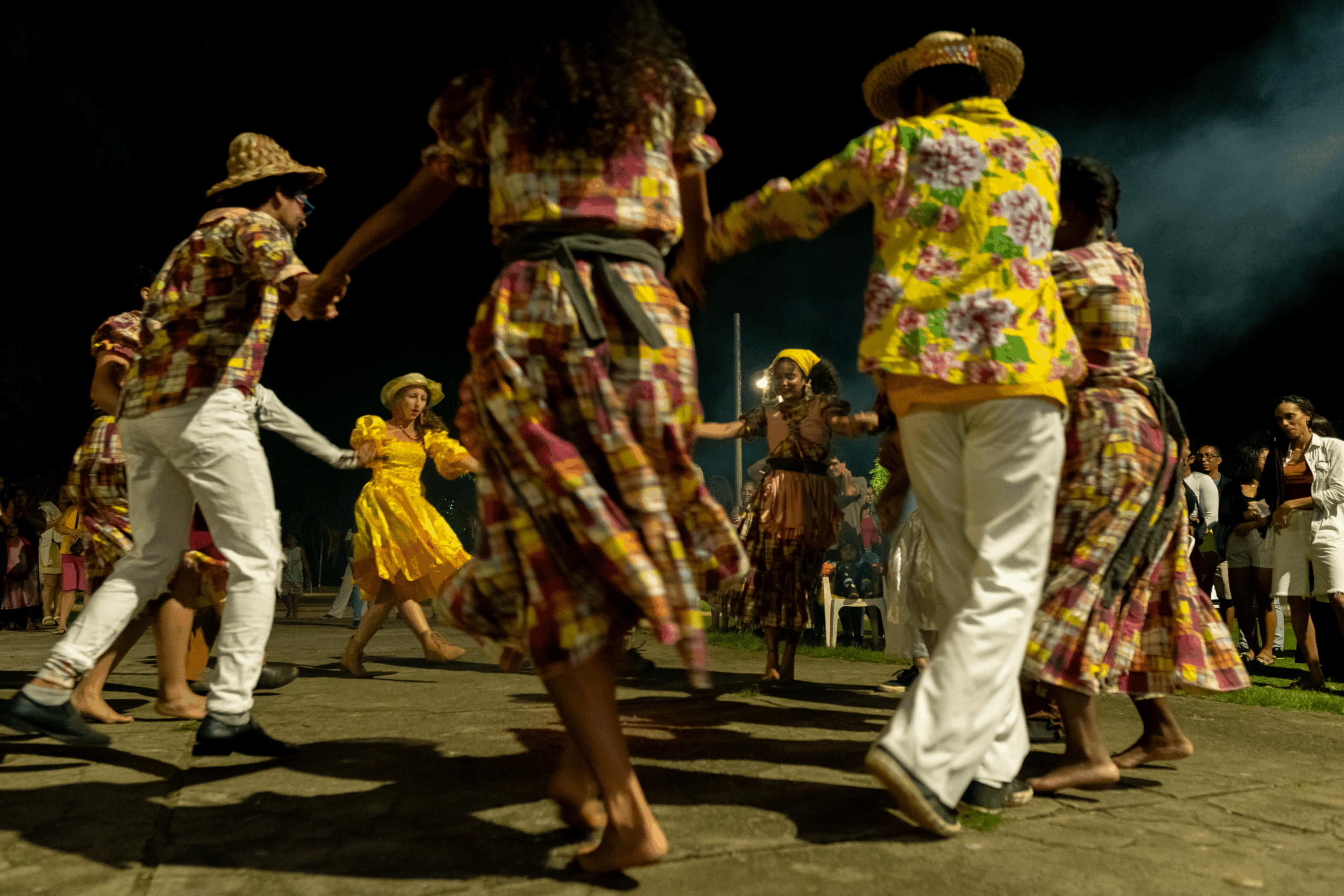
The square of Serra Grande was filled with music, dance, and culture during the launch of the mini-documentary “From the Atlantic Forest to the World.” Credit: Igor Pimentel
On the night of May 24, the square of Serra Grande, in the south of Bahia, turned into a party stage. Not even the rain dispersed the audience that gathered to watch the Boi da Jurema procession and see the musical performances of Matuto de Serra Grande, Mulheres em Domínio Público, Seu Lito, and Laiô. The groups and artists are protagonists of the mini-documentary “From the Atlantic Forest to the World,” produced by Instituto Arapyaú and directed by Mariane Claro and Igor Pimentel, which was presented for the first time to the city’s public.
“We realized how important it was for the artists to have the opportunity to see themselves on screen,” comments Sabrina Fernandes, Communication Manager of Arapyaú.
The work, which is part of a series of three mini-documentaries released earlier this year, celebrates the sounds and cultures of the biome where the history of Brazil began, bridging with other territories, especially the Amazon. The audience has the opportunity to enter nature with Seu Matuto, singing caboclo songs, and play quadrilha with Seu Lito, who keeps this tradition alive.
“I want to be a lit candle and I will shine forever,” sings Dona Val, singer and composer from Salobrinho (BA), another protagonist of the mini-doc. She, who lived for years on a cocoa farm, learned the songs that the workers sang to ease the burden of work. They are “country songs, washerwoman songs,” as she defines them, and today they reach more ears thanks to the band Mulheres em Domínio Público, from Ilhéus (BA).
From boi-bumbá to samba de roda, these forest rhythms are cultural expressions that mix elements of indigenous, African, and European traditions, reflecting the diversity of the Atlantic Forest.